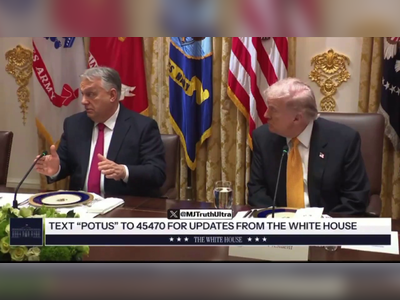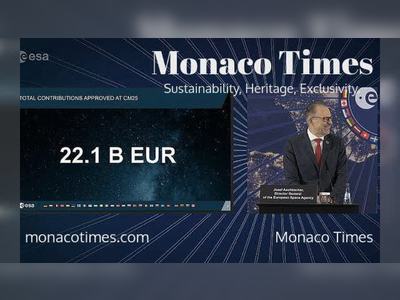OECD Warns of Global Economic Slowdown Due to Trump-era Tariffs
The imposition of tariffs by the former U.S. administration is projected to significantly impact global economic activity, with revised growth forecasts signaling potential downturns.
On June 3, 2025, during a press conference in Paris, Mathias Cormann, Secretary-General of the Organisation for Economic Co-operation and Development (OECD), acknowledged the increasingly challenging global economic environment, attributing this change to new tariff policies instituted by the former U.S. administration.
Alvaro Pereira, the Chief Economist at the OECD, reported that nearly all economies worldwide are now expected to experience reduced growth due to these trade policies.
In preparation for the OECD's economic forecasts, Pereira noted, "Trade is suffering, particularly consumption and investment," emphasizing the adverse effects of continued tariff enforcement.
The OECD, which comprises 38 developed nations, is conducting a ministerial meeting in Paris where trade discussions between American and European negotiators are also scheduled to take place alongside a G7 meeting focused on trade-related issues.
President Trump, who returned to the White House in January 2025, rapidly initiated a new round of tariff implementation, creating a volatile business climate marked by erratic announcements and significant increases in tariffs, including a recent doubling of tariffs on steel and aluminum to 50% effective shortly thereafter.
The OECD observed that the initial economic activity rebound in late 2024 and early 2025 resulted from businesses attempting to build inventory ahead of anticipated tariff increases.
However, the organization has detected signs of economic deterioration, including a sharp decline in container shipping freight rates from Shanghai to the United States, a direct result of ongoing trade tensions between the U.S. and China.
The OECD highlighted the U.S. as a crucial export market for several countries, noting that approximately 75% of goods exported from Mexico and Canada, 19% from Japan, 13% from China, and 10% from Germany are destined for the United States.
As of May, the effective tariff rate on imported goods in the U.S. rose from 2% to 15.4%, the highest level observed since 1938, reflecting the impact of these trade policies on the overall economy.
Global growth is projected to slow to 2.9% in 2025 and 2026, constituting decreases of 0.2 and 0.1 percentage points, respectively, from earlier forecasts provided in March 2025. This anticipated growth rate represents the slowest annual increase since the onset of the COVID-19 pandemic.
The OECD predicts U.S. economic growth will decelerate to 1.6% in 2025, down from a March estimate of 2.2%.
The adjustment for 2026 is less pronounced, with a forecasted growth rate of 1.5%, down from 1.6% previously.
Further factors contributing to a weakened U.S. economy, as per the OECD, include a decline in net immigration and a reduction in the number of federal government employees, both of which are influenced by the Trump administration's policies.
Despite these concerns, President Trump asserted on social media that, due to the tariffs, the U.S. economy is "thriving" just prior to the OECD's economic outlook release.
The organization also forecasts U.S. inflation rates to remain elevated, with estimates of 3.2% for 2025 and 2.8% for 2026, roughly one percentage point higher than in the Eurozone, attributing this to the effects of the imposed tariffs.
The OECD did not downgrade its growth forecast for the Eurozone, maintaining a 1% growth projection for the current year, although it indicated rising pessimism regarding France, where growth expectations have been adjusted down from 0.8% to 0.6%.
Alvaro Pereira, the Chief Economist at the OECD, reported that nearly all economies worldwide are now expected to experience reduced growth due to these trade policies.
In preparation for the OECD's economic forecasts, Pereira noted, "Trade is suffering, particularly consumption and investment," emphasizing the adverse effects of continued tariff enforcement.
The OECD, which comprises 38 developed nations, is conducting a ministerial meeting in Paris where trade discussions between American and European negotiators are also scheduled to take place alongside a G7 meeting focused on trade-related issues.
President Trump, who returned to the White House in January 2025, rapidly initiated a new round of tariff implementation, creating a volatile business climate marked by erratic announcements and significant increases in tariffs, including a recent doubling of tariffs on steel and aluminum to 50% effective shortly thereafter.
The OECD observed that the initial economic activity rebound in late 2024 and early 2025 resulted from businesses attempting to build inventory ahead of anticipated tariff increases.
However, the organization has detected signs of economic deterioration, including a sharp decline in container shipping freight rates from Shanghai to the United States, a direct result of ongoing trade tensions between the U.S. and China.
The OECD highlighted the U.S. as a crucial export market for several countries, noting that approximately 75% of goods exported from Mexico and Canada, 19% from Japan, 13% from China, and 10% from Germany are destined for the United States.
As of May, the effective tariff rate on imported goods in the U.S. rose from 2% to 15.4%, the highest level observed since 1938, reflecting the impact of these trade policies on the overall economy.
Global growth is projected to slow to 2.9% in 2025 and 2026, constituting decreases of 0.2 and 0.1 percentage points, respectively, from earlier forecasts provided in March 2025. This anticipated growth rate represents the slowest annual increase since the onset of the COVID-19 pandemic.
The OECD predicts U.S. economic growth will decelerate to 1.6% in 2025, down from a March estimate of 2.2%.
The adjustment for 2026 is less pronounced, with a forecasted growth rate of 1.5%, down from 1.6% previously.
Further factors contributing to a weakened U.S. economy, as per the OECD, include a decline in net immigration and a reduction in the number of federal government employees, both of which are influenced by the Trump administration's policies.
Despite these concerns, President Trump asserted on social media that, due to the tariffs, the U.S. economy is "thriving" just prior to the OECD's economic outlook release.
The organization also forecasts U.S. inflation rates to remain elevated, with estimates of 3.2% for 2025 and 2.8% for 2026, roughly one percentage point higher than in the Eurozone, attributing this to the effects of the imposed tariffs.
The OECD did not downgrade its growth forecast for the Eurozone, maintaining a 1% growth projection for the current year, although it indicated rising pessimism regarding France, where growth expectations have been adjusted down from 0.8% to 0.6%.









